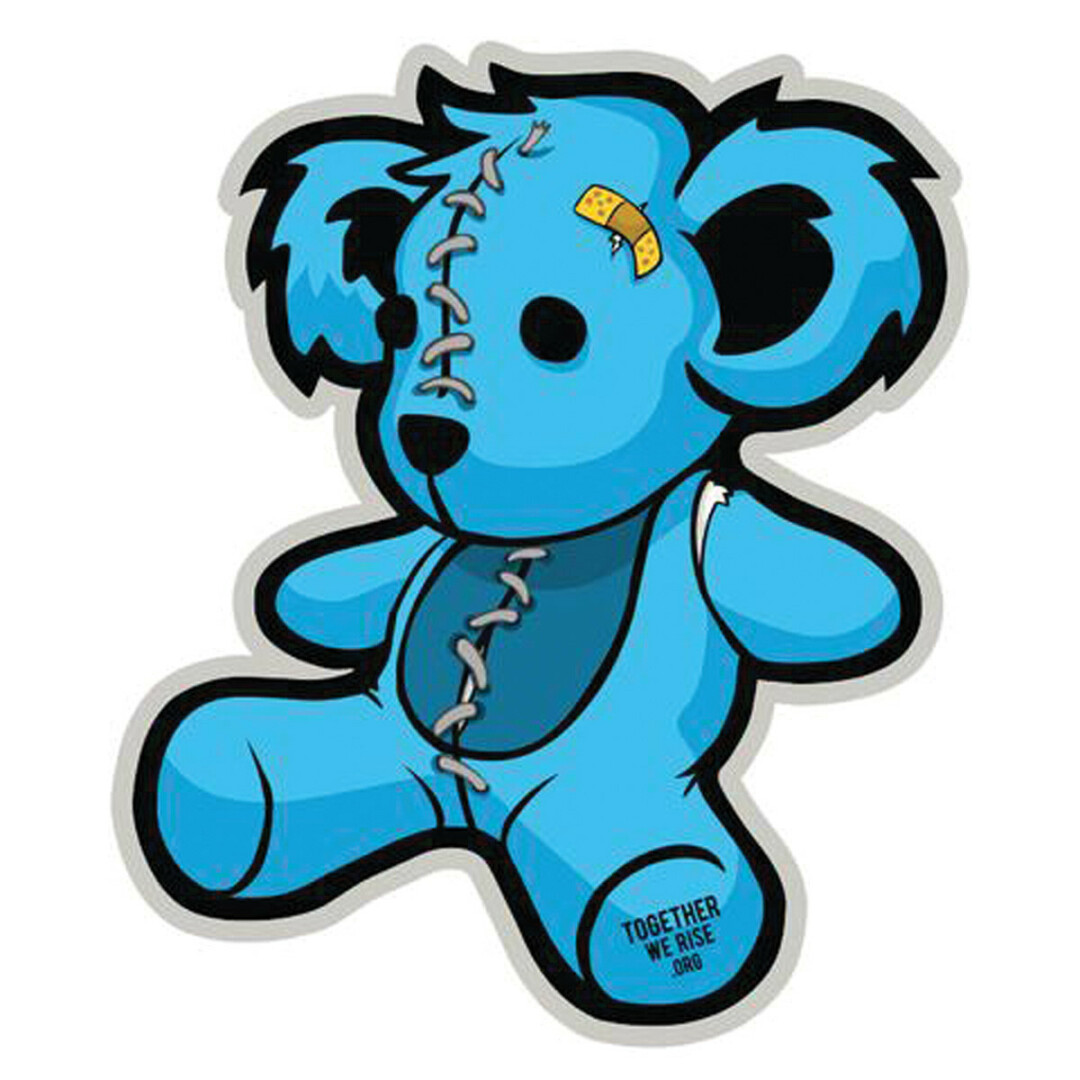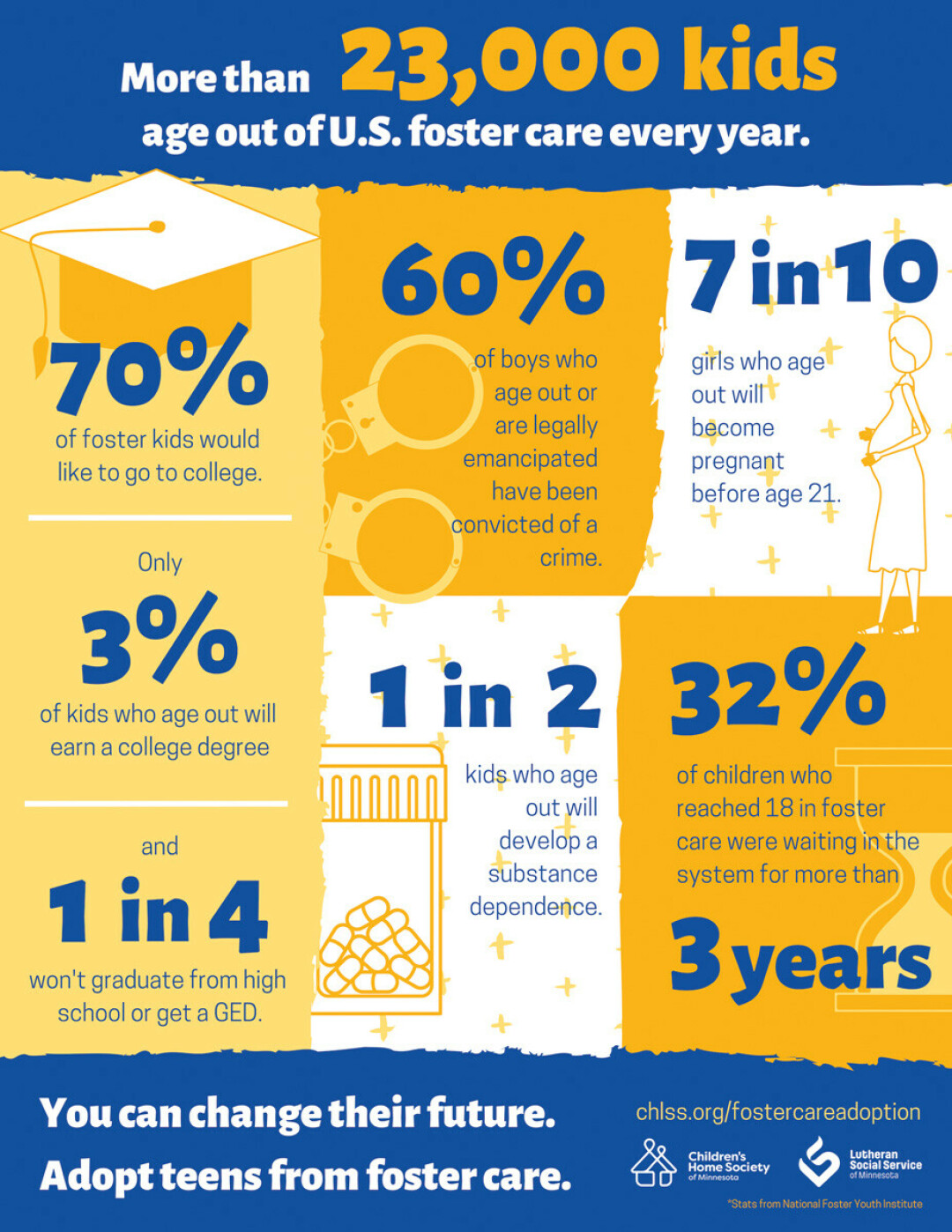Help Bless Foster Children this Holiday Season
I was about 5 years old when I met my 6-year-old, soon-to-be stepsister, Tiara. She was my best friend; we played on the weekends when she came to our house with her brother for time with their dad. She was so beautiful but looked so different than the rest of her very light skinned, blue-eyed, super blonde family with her dirty blond curly hair, darker-complected skin that bronzed beautifully in the sun, and gorgeous hazel eyes. When I was old enough to understand, I learned that Tiara was adopted as a baby by her dad and mom, a year and a half before they got pregnant with her little brother. I was so grateful for her, and for them adopting her - giving her a better life than her birth parents could so she could be the person she was meant to be. I thought, what an amazing gift to be able to give to someone so helpless, so full of need and guidance. I couldn’t imagine her not in my life; she was my soul-sister that I would never have met had she not been adopted. This all compelled me to decide, at a very young age, that I would someday adopt, or provide foster care for children that also needed and deserved to have a healthy and happy family to guide them through life.
A Brief Breakdown of Foster Care in Montana
According to Montana’s DPHHS website on “Becoming a Foster Parent,” as of June 30, 2020, there were 3,456 children (ages 0 - 18) in the state of Montana in the Foster Care System waiting. Waiting for their parents to get it together, for a family member to step up for them, or a caring stranger to offer them a hand and a home. 3,456 kids who must carry their belongings, most of the time in trash bags, from CPS buildings to extended relatives’ homes, group homes, strangers’ homes - no matter if it’s Christmastime, right around their birthdays, time to go back to school, or smack dab in the middle of the semester. Sometimes they get to stay with their siblings, sometimes they don’t because there just aren’t enough beds in the same place. Sometimes they are placed in group homes - about 1 out 3 teens that enter the system and 1 out of 7 children under 12 go into group homes - but right now there aren’t any group homes in Gallatin Valley. There aren’t enough foster families, either. One would be surprised to learn in a county so full of prosperity and love (e.g., Give Big Gallatin Valley), that there are very few licensed foster care families and nonprofit organizations for foster children. To put foster care in Montana into perspective, in 2017 Montana ranked as #2 on the list of states with the largest population of foster care children, with 16.4 kids per 1,000 in the foster care system, only outranked by West Virginia. 52% of these children are white, 36% are Native American, with neglect being the primary reason for children being removed from the home 77% of the time.
Neglect of a child, as defined by the Montana State Legislature includes, but is not limited to the following: ‘“Physical neglect” means either failure to provide basic necessities, including but not limited to appropriate and adequate nutrition, protective shelter from the elements, and appropriate clothing related to weather conditions, or failure to provide cleanliness and general supervision, or both, or exposing or allowing the child to be exposed to an unreasonable physical or psychological risk to the child. “Psychological abuse or neglect” means severe maltreatment through acts or omissions that are injurious to the child’s emotional, intellectual, or psychological capacity to function, including the commission of acts of violence against another person residing in the child’s home.’ By this description, it could be understood that some of these children might have some emotional and psychological or even physical, mental, and occupational needs that will require assessment and therapies. These children did not choose these issues and they need to have people in their lives that get them the proper and consistent help that will grow them into successful adults.
With all of this being said, Montana does prioritize reunification of children and families through the court system and has a 63% reunification rate. Treatment plans, therapies, the foster care system substance abuse programs, CPS, and so many other components come into reuniting a family. If no reunification is possible, and no kin can be found responsible for the child within the first 6 months, then the State will start to look for a permanent option for the child(ren) after about 15-22 months in the foster care system.
In This Season Of Giving, Here’s How You Can Help
In Gallatin Valley, there are only a handful of advocate and resource groups specific to foster children and families, and donations and volunteers are always welcome and encouraged. CASA/GAL of Gallatin County (Court Appointed Special Advocates) provides the most services pertaining to the courts and legal aspect of a child being abused or neglected. This is a volunteer-based service, providing extensively trained advocates to abused children to be their voices, and Judges with non-partial eyes and ears devoted to the child’s wellbeing. They work closely with CPS and passionate volunteers to ensure children that have been removed from their homes get the placement and support they need, and the proper representation in court. CASA volunteers are not always foster parents, but in many cases are, and whether or not they foster their CASA child is up to them. The CASA are currently serving 126 youths in Gallatin Valley with 62 volunteers advocating for those children. You can donate or volunteer at gallatincountycasagal.org/.
The Gallatin County Child Advocacy Center, formed in 2017 and an extension of The Help Center, provides a safe, comforting space for investigators and CPS agents to interview and record an abused child’s account of events, and to offer a place and resources for therapies and continued support. They are accredited by the National Children’s Alliance and serve to improve outcomes for and reduce trauma to the child and support communication between agencies involved in the child’s welfare case. Donating to bozemanhelpcenter.org directly impacts the Child Advocacy Center’s funding.
Youth Dynamics is a nonprofit children’s mental health organization that provides evidence-based mental health services that cover things from therapy, case management, foster and respite care, therapeutic youth home care, substance abuse treatment, independent living skills, as well as services in Boulder, MT, for children with highly sexualized behaviors. They offer extensive training to foster families willing to provide Therapeutic Foster Care, a type of foster care that involves working closely with a YDI team for therapy, case management, medication management, and other necessary support to ensure the child can achieve the goals set forth in their treatment plan and return home or be adopted into a better family unit for them. You can look at the requirements and training associated with being a Therapeutic Foster Family, as well as ways to donate at www.youthdynamics.org.
The HRDC of Bozeman, Human Resource Development Council, offers a program to older children in the foster care system, known as the CHAFEE Foster Care Independence Program. This program, intended for foster children 14+, provides assistance with things like academic support, scholarships for college, preventative health and substance abuse, career exploration, job placement, and transitioning to self-sufficiency after “aging out” of the foster care system. Find out more about the CHAFEE program and how to donate or volunteer at thehrdc.org/chafee-foster-care-independence-program/.
An amazing foster mom and big help in the writing of this article, Kathy Schmidt, runs “Adelaid’s Closet,” found on Facebook and based in Gallatin Valley. This is a donation-based clothing resource for new foster children, or foster children that have been placed in a new home. They hope to reduce the financial strain on foster families, allowing them to focus on meeting other needs the child might have to make adapting to a new place easier. Donations of new or gently used clothing, shoes, backpacks, purses, bikes, etc. are always welcome, and more contact information is available at facebook.com/Adelaides-Closet-751282131911195/.
On a state-level, Child Bridge is a religious foster care/adoption nonprofit that has multiple cities and towns they help in, Bozeman being one of them. Based out of Bigfork, they are faith-based and focused on “finding and equipping foster and adoptive families for Montana children who have suffered abuse and neglect.” Child Bridge partners with a few big names including the Gianforte Family Foundation, Gilhousen Family Foundation, and Costco, and uses donations from individuals like you to provide resources free of charge. Find more information on how to sign up with them to foster or donate at childbridgemontana.org/.
The Mayfly Project is a national nonprofit, focused on using fly fishing as a catalyst for mentoring and supporting children in foster care. Based out of Arkansas and formed in 2015, the Mayfly Project has a “project location” in Bozeman that is excited to be open and accepting volunteers and donations. The Mayfly Project offers 1-on-1 mentoring, its model being based on the 5 stages of a mayfly’s life. Some of the skills they learn during the course of the stages include line management, casting techniques, knot tying, etymology, catch and release tactics, and the importance of conservation. At the end of the program, they are gifted equipment to continue to be able to fly fish and have formed life-long skills and relationships to carry through life. Apply to mentor or donate at themayflyproject.com/bozeman-montana-project/.
Together We Rise is a well-known, national nonprofit out of California, formed in 2008, that works with volunteers across the nation to ensure foster children have access to things like duffle bags to carry their possessions in instead of trash bags, bikes or skateboards for transportation to school and activities or jobs, birthday boxes to help celebrate them on their special day, and college scholarships for foster children “aging out” of the foster care system. Visit their website at togetherwerise.org to offer to host an activity, sign up as a foster organization to receive a donation, or to donate to Together We Rise!
Ready to give the Ultimate Gift? How to Become a Foster Parent
So many people in Gallatin Valley qualify to be foster parents and don’t even realize it. Not only qualify to be foster parents but would be great at it and make such a difference in the lives of so many of Montana’s children. Besides passing a background check and child protective services screening, there are about a handful of other requirements the state is looking for in a foster parent. These include having a safe environment and stable mentality, being financially stable enough to support your family, able to complete foster care trainings, and having a few close friends and family to provide character references. Montana allows single persons, heterosexual and same-sex partners to be foster parents. One doesn’t necessarily need to already be a parent, own their home, or be well-off. There is no pay for being a foster parent, but there are child expense reimbursements that help offset the costs of caring for a foster child. The most important thing is that a safe and stable home life is provided, and physical and emotional needs of the foster child(ren) are met. Time, vulnerability, and love are definitely important, as well.
On the DPHHS Foster Care website, they have a lot of resources for learning about foster children, how to become a foster parent, step-by-step guides to becoming a foster parent, and a form you can fill out expressing your interest and the State will contact you.
The Indian Child Welfare Act, protecting 36% of Montana’s foster population, states “The Congress hereby declares that it is the policy of this Nation to protect the best interests of Indian children and to promote the stability and security of Indian tribes and families by the establishment of minimum Federal standards for the removal of Indian children from their families and the placement of such children in foster or adoptive homes which will reflect the unique values of Indian culture, and by providing for assistance to Indian tribes in the operation of child and family service programs.” This means that Native American children should be placed with a foster family within their culture, but due to the lack of foster families in general, funding for these programs, and understaffed agencies, this is unfortunately not always a possibility. Native American families that have the ability to foster are strongly encouraged to apply.
As aforementioned, there are also a few local nonprofit agencies that help to prepare foster families and place foster children, Youth Dynamics and Child Bridge, and these organizations will have their own requirements much like the State of Montana’s. They are both accepting new foster families with open arms, provide services at no cost, and are ready to help guide and support you through the process.
With so many children in Montana in need of safe, loving homes - almost 3,500 kids living in temporary situations with family members, in group homes, foster homes and the like, we have to ask ourselves how to get involved. The number of foster children in Montana steadily increases as the population grows in general, as we pass the million-population mark in Montana, socio economic issues come with. Not only with the housing and job issues that we are well aware of, but also with Montana’s children, and the neglect and abuse that some of them have to endure. Making Montana, and Gallatin Valley the “Last Best Place” means that we need to provide strong support for foster children, foster families, and parents working on reunification. Donating, volunteering, and becoming foster parents seem like great places to start!
